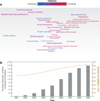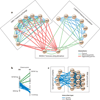A decade of systems biology
- PMID: 20604711
- PMCID: PMC3371392
- DOI: 10.1146/annurev-cellbio-100109-104122
A decade of systems biology
Abstract
Systems biology provides a framework for assembling models of biological systems from systematic measurements. Since the field was first introduced a decade ago, considerable progress has been made in technologies for global cell measurement and in computational analyses of these data to map and model cell function. It has also greatly expanded into the translational sciences, with approaches pioneered in yeast now being applied to elucidate human development and disease. Here, we review the state of the field with a focus on four emerging applications of systems biology that are likely to be of particular importance during the decade to follow: (a) pathway-based biomarkers, (b) global genetic interaction maps, (c) systems approaches to identify disease genes, and (d) stem cell systems biology. We also cover recent advances in software tools that allow biologists to explore system-wide models and to formulate new hypotheses. The applications and methods covered in this review provide a set of prime exemplars useful to cell and developmental biologists wishing to apply systems approaches to areas of interest.
Figures










References
-
- Asyali MH, Colak D, Demirkaya O, Inan MS. Gene expression profile classification: a review. Curr. Bioinforma. 2006;1:55–73.
Publication types
MeSH terms
Grants and funding
LinkOut - more resources
Full Text Sources
Other Literature Sources
Molecular Biology Databases

